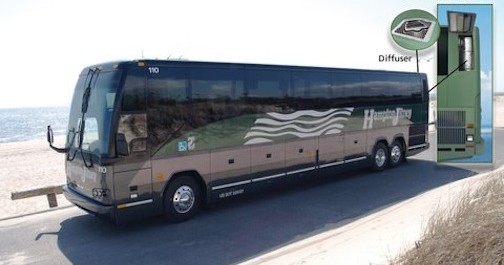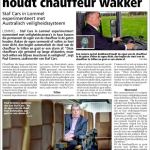Hampton Jitney: Running Green
This is an article written by Emily J. Weitz of the Sag Harbor Express:
Emily J. Weitz
Going green has become the trendiest thing since the mullet rocked the 80s, but there are some institutions that have been thinking about the environment since long before it was the thing to do. Hampton Jitney, which was founded in 1974 by Jim Davidson, has always been committed to conservation. Back then the Jitney was a shuttle van that operated locally.
“They would put bikes on front of Jitneys and go town to town,” says Carly Shephard, head of marketing at Hampton Jitney.
Davidson quickly saw the need for service between the East End and Manhattan and expanded the line by the late 70s.
“We’re like a big car pool for East Enders,” says Shephard. “Our original owner and our current owners (another local family – the Lynches) have always believed in this philosophy.”
That philosophy has expanded from car pooling to many other, more innovative ways of caring for the environment. There are the basic things to which the company strictly adheres, like recycling the 130 tons of newspapers read onboard by passengers annually. There’s the easy access to recycling bins in every Jitney facility, and the recycling of every water bottle passed out on board. But in addition to all this, which with the green movement have become the bare minimum for a progressive company, the Jitney has become inventive.
Recycling cans and bottles is one thing, but what about recycling oil?
“We recycle our used oil [from the motor coaches] to heat our facility here in Southampton,” says Shephard.
Through Clean Burn, a clean energy company, the Hampton Jitney has employed the use of a hot air burner that combines motor oil and transmission fluid with compressed air to create fuel for heat.
“One hundred percent of the shop heat comes from the waste oil,” Shephard says.
Along with the fuel that a fleet of motor coaches burns through, there’s also the water. Those shiny green buses don’t stay sparkling by themselves. They’re washed in the Jitney’s own indoor washing facility every night.
“The water goes to a special drain and is recycled and reused to wash more coaches,” Shephard explains.
Recycled water is used for the wash, and fresh water for the rinse. This process conserves an estimated 20,000 gallons of water every year.
The coaches themselves are much more environmentally friendly than in the past.
“All of our newer coaches,” explains Shephard, referring to any Jitney from 2008 or later, “have engines that produce 55 percent less nitrogen oxide and 90 pecent less particulate matter like soot and ash than other motor coaches produced by the same manufacturer, Prevost Coaches.”
Their emissions are cut because of a new exhaust after-treatment system in place of a traditional muffler. The system is made up of a Diesel Oxidation Catalyst and a Diesel Particulate Filter that captures and burns off soot.
“Approximately 60 coaches produce the same amount of soot that 1 manufactured in the 1970s did,” Shephard says.
All Jitneys run on a biodiesel blend, which is comprised of renewable sources such as soy and a fat-based stock. They automatically shut off after a certain period of idling, which is particularly important at stops in the city when they might be idling for 15 minutes.
The Hampton Jitney’s efforts have not gone unnoticed. The company became part of a test pilot program launched through the University of Vermont in 2007.
They were “exploring lower impact travel,” says Shephard. “They went through and made sure we were a green company, that we used clean energy technology… They classified us as Green Coach Certified.”
This Green Coach Certification Process was set up to empower consumers to choose an environmentally conscious solution when possible.
From a company that started with the intention of being “one big car pool,” the Jitney has grown into one of the primary ways that people get to and from the city. But the original intent of conservation is still at the core.
“It’s important,” Shephard says, “because we have a large community on the East End commuting, and we’re trying to take cars off the road. Our original owner and our current owners have always believed in this philosophy.”






